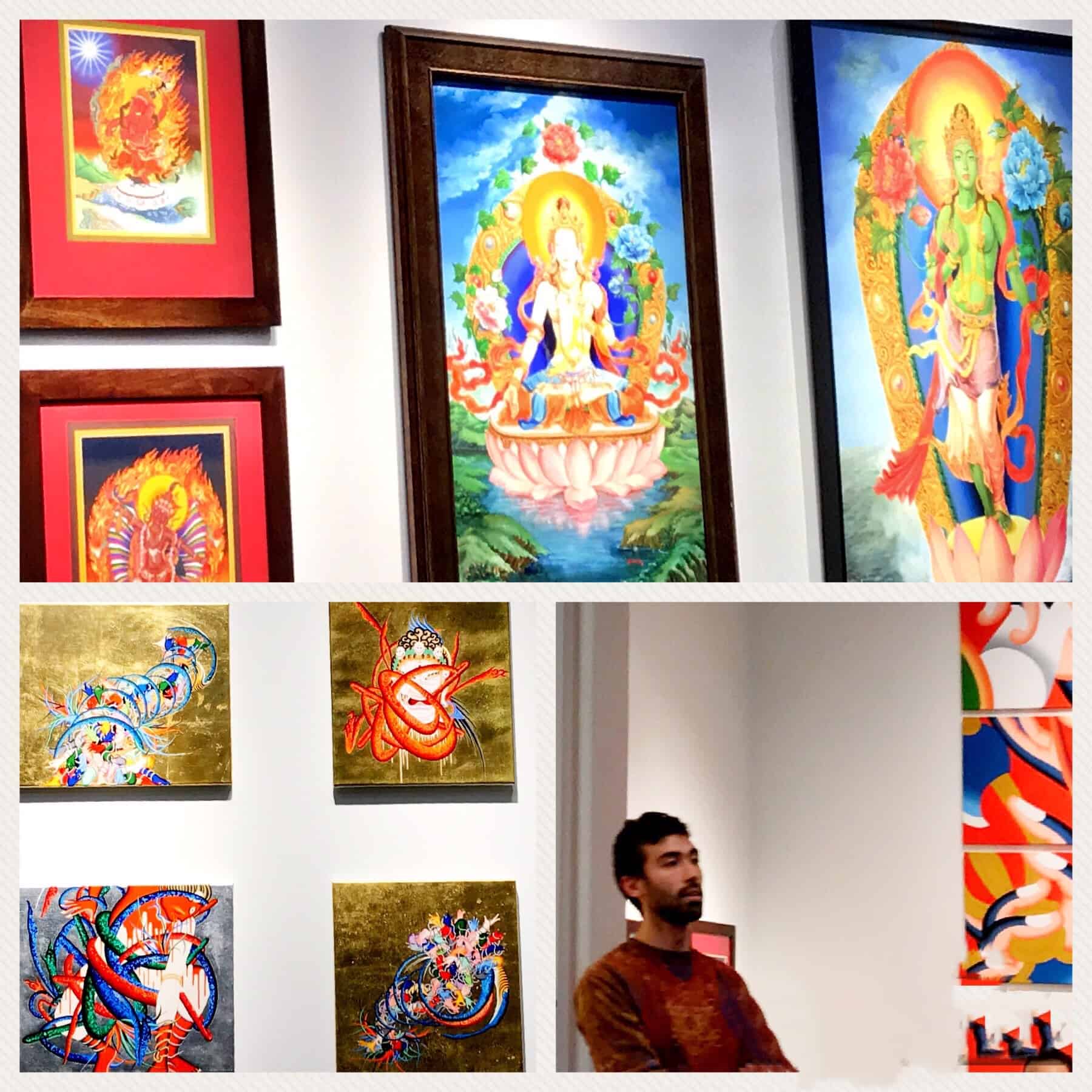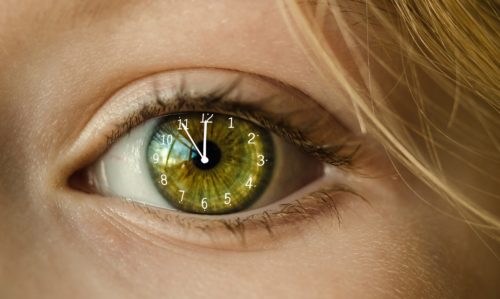Have you ever had a lucid dream or know what lucid dreaming is? Chances are you’ve experienced a lucid dream at some point in your life, even if you didn’t know what it was called.
Essentially a lucid dream is a dream where you are aware that you’re dreaming and during that lucid dream, you may be able to actually exert some degree of control over the dream characters, narrative, and environment. Yes, really! How does this work you wonder?

I recently attended a seminar at the California Institute of Integral Studies in San Francisco on lucid dreaming. Evan Stites-Clayton, who has been having lucid dreams for over a decade, is among other things, the founder of Teespring. This isn’t the first workshop that Evan has held on lucid dreams, nor I suspect will it be his last.
Passionate about lucid dreaming, he has begun to explore what can be done and not done in a lucid dream. At least, what he has been able to do and not do in a lucid dream based on personal experience.
So, Why Lucid Dream?
As I mentioned above, a lucid dream is where you can feel that “I am there,” and you‘re aware of things around you but also that you‘re in fact dreaming. Once you develop the awareness that you‘re in a lucid dream state, then you can in fact exert control inside that dream — who you talk to, what you do, what characters show up and so on.
Exploring lucid dreaming is an exploration of higher consciousness and expanding consciousness for yourself. It’s a ‘flavor’ of awareness if you like.
You might be asking, why would I want to lucid dream? Isn’t frightening to be so aware inside a dream? The answer is yes and no, as sometimes frightening (or perceived frightening things) might just show up. As in all things in our waking life, once we face our fears they tend to dissipate and get smaller and it’s a whole lot easier for many of us to face something or someone in a dream than it is in our daily life.
What are the why’s for Evan?

Evan speaking to Lucid Dream workshop attendees
Inevitably, you can imagine that there’s entertainment value to exerting control over your dream, not unlike the effect many gamers get from virtual reality experiences in their waking life. You can fly over beautiful mountains and valleys and create characters you’ve always wanted to talk to. While having your deepest adventures come to life is one aspect of what makes a lucid dream compelling for some, there are deeper and I’d argue, more compelling reasons to go down this road.
I’m a huge believer in facing the internal demons we try to flee from since avoiding them keeps us away from becoming all that we can be and stepping into our full potential. When those barriers break down, higher parts of ourselves can emerge which will take on challenges with gleeful smiles and confidence that we may not be possible otherwise. In other words, by dismantling fear, so much more joy is possible in our lives, whether we‘re asleep or awake.
There’s tremendous therapeutic and healing benefits to getting a handle on your dreams. In a lucid dream state, you’re more likely to remember the dream (we’ll talk about that in a minute) and in doing so, can better assess the meaning behind the dream, including any fears that may show up in it. Make sense?
There are also dream yoga approaches as well, something I know little about. In fact, there’s an entire book (several actually) on Dream Yoga but the newest one I’ve managed to find is this one on Dream Yoga by Andrew Holecek.
Then there are nightmares, some so bad we may go into a sleep paralysis, where we’re aware that we’re dreaming but can’t move. Evan argues that when you’re in this state, you’re in a hyper aware state, and truly present. While it may feel scary, you’re at the entrance to a wild dreamland very few have the courage to explore.
It will expand your awareness and your consciousness in ways you can’t imagine until you go there. “Tread with caution,” adds Evan, as venturing into any unknown world may have a surprise or two. Be open, but know what you‘re getting into….and remember you‘re in a lucid dream so you will eventually wake up.
How to Remember Your Dreams
What if you’re one of those people who never remember your dreams? If so, you may be wondering how would I know I’m in a lucid dream if I can’t remember my dreams in the first place? Luckily, there are useful tips and tricks that can help you better remember your dreams.
Below is a list of some of them: a combination of attendee suggestions, Evan’s insights and what I’ve learned from reading Kala Ambrose’s book, The Awakened Dreamer – an amazing read btw and newly available on Amazon.
- Journaling: Keep a notepad next to your bed — when you realize you’re dreaming, try to wake yourself up and jot down what you remember. If you prefer not to wake yourself up, try the same exercise as soon as you wake up in the morning.
- Record Your Dreams: alternatively, if you’re one of those groggy people when you first wake up or not a morning person (that’d be me), you can record what you remember in a mini-recorder or your iPhone. (under Voice Memos)
- Share Your Dreams with a Someone: share your dream in the morning at breakfast or with a colleague over coffee. The more you open up and do this, you’ll find that the more you’ll remember them.
- Wake Up Slowly: spend 5-10 minutes becoming consciously aware. Try to think and reflect what was in your dream and even if you don’t have a notepad nearby, think about how the dream made you feel? What was the feeling you had? When awake, get ‘connected’ to the emotion you had when you first woke up.
- Set Intention Before You Head to Bed: I have tried this technique and it actually works. Set the intention to remember your dreams the next morning. If you believe in spirit guides or actually have one you communicate with regularly, ask them for assistance. If it doesn’t happen the first few times you do this technique, don’t give up. Keep trying and it will come to pass with purpose and intention.
Evan argues that you really need a vessel that the dream can go into for it to turn into reality, which can be a dream journal or a recorder, or someone you tell it to. This is a stronger way to manifest that dream into a reality, as a conductor of sorts. The other tip that can be helpful is to write down what you remember about the dream in the present tense.

Lucid Dream Checking
There are tips you can do to check whether you‘re in the dream or not, as a way to confirm whether you‘re having a lucid dream. Am I dreaming or am I awake?
Start with the assumption that you’re dreaming. A couple of things you could do to see if you pass the lucid dream test:
- Pinch your nose in the dream and see if it hurts – do you feel it?
- Create the time and place, look for an ID, like an alarm clock – see if the time changes
- Retrace your steps in the lucid dream. Back track to where you would be before a particular activity happened.
- Shut the light on or off and see if it changes. I got this tip from the movie The Waking Life which we watched the day after the workshop as it incorporates lucid dreams into the movie among other powerful things on consciousness. Even though the movie, which was directed by Richard Linklater, has been out since 2001, the topics it explores are as relevant today as they were then, if not moreso. The movie covers a range of philosophical issues including the nature of reality, dreams, consciousness, the meaning of life, free will, and existentialism.
We learn that in order to realize you’re dreaming, you have to practice that you’re actually dreaming. “Allow yourself to make this leap,” says Evan. “Make the leap of faith and this will lead to lucid dreaming.”
Once you realize you’re having a lucid dream, what do you do?
I’m in the Lucid Dream, Now What?
You’ve probably had the experience of feeling or sensing your heart racing when you‘re aware that you‘re in a dream. If your heart races too fast, you may wake up from the dream, which you don’t want. This is where self-control comes into play.
By allowing yourself to control what happens, rather than jump to a ‘fear’ place, which may result in taking a large step or running, make a small step instead. You’ll then begin to see that perhaps there’s nothing to be afraid of and something new and wild emerges as a result of just ‘being’ PRESENT within your lucid dream. Evan asserts that there’s a much bigger range in the dream world that leads to holes to other portals.
BREATHE when you realize you‘re in a lucid dream and take things slowly. This will give you time to be present in the dream. We are told that one important thing that helps in this process is to try to walk around slowly and be grateful for the dreamworld you‘re in and for what your‘e seeing and ‘being shown.’
You can rotate your wrists and ankles slowly and try to take mental notes of what you want to bring back. By that, I mean, what you want to remember, intend and turn into reality once you wake up. Evan’s life is filled with a polyphasic sleep pattern more often than not, where he has two blocks of sleep in a 24 hour period.
This can be done as a ‘night sleep’ and perhaps a Latin siesta-like nap or it can be done by waking up at around 5 am (getting up for a half an hour or so) and then returning to bed. Lucid dreaming often happens during this period of time. BTW, Kala Ambrose uses this sleep pattern to lucid dream as well.
“The waking world ties us into a language based primal instincts of what to do and how to act. But there is so much more to the mind. In a dream, merely the intention of making a horse come closer to you can manifest it. The limitations which exist in an awakened state don’t exist in the dream world.”
Lucid Dream Technology
Given that the workshop was held in San Francisco, it should be no surprise that technology was part of the event, is intervening with dreams and being used by some to learn more about what we don’t know in our sleep / dream state.
The whole brain is apparently active during dreams, from the brain stem to the cortex. You have probably heard of REM (rapid eye movement) sleep, which is part of the sleep-wake cycle and is controlled by the reticular activating system. 
According to Science Daily, during this stage, the activity of the brain’s neurons is quite similar to that during waking hours and most of the vividly recalled dreams occur during REM sleep.
It is the lightest form of sleep, and people awakened during REM usually feel alert and refreshed.
There is technology that is actually monitoring the brain during a lucid dream as well as a number of lucid dream masks (yes, really) that apparently help make your lucid dreams more vivid. Some of them include the Sweet Dreams Contoured Sleep Mask, the Mindfold Relaxation Mask, the Remee Dreamer Sleep Mask, the REM Dreamer Pro Lucid Dreamer Induction, Dream Essentials Escape, Neuroon Smart Sleep Mask and others.
There’s Nova Dreamer as well, which works by detecting the rapid eye movements of REM sleep and delivering flashing light cues to the user at the right time. In advance, you are given exercises to learn how to recognize these specific light cues and once you do, you will then realize, “wow, I’m in a lucid dream.”
You can even pop a pill and enhance your lucid dream, not that I’m suggesting it. They do exist however and technology is investigating what happens to the dorsolateral prefrontal cortex (DLPFC or DL-PFC) in a lucid dream state, which is an area in the prefrontal cortex of the brain of humans and non-human primates. It is apparently one of the most recently evolved parts of the human brain and largely manages cognitive processes, including things like working memory, cognitive flexibility and planning.
There are even apps of course, such Awoken, one that Evan built at dreamingorawake.com and others. You can also check out DreamLabs.tech as a resource and this article on Astral Travel and controlling your dreams.

Renee Blodgett is the founder of We Blog the World. The site combines the magic of an online culture and travel magazine with a global blog network and has contributors from every continent in the world. Having lived in 10 countries and explored nearly 80, she is an avid traveler, and a lover, observer and participant in cultural diversity.
She is also the CEO and founder of Magic Sauce Media, a new media services consultancy focused on viral marketing, social media, branding, events and PR. For over 20 years, she has helped companies from 12 countries get traction in the market. Known for her global and organic approach to product and corporate launches, Renee practices what she pitches and as an active user of social media, she helps clients navigate digital waters from around the world. Renee has been blogging for over 16 years and regularly writes on her personal blog Down the Avenue, Huffington Post, BlogHer, We Blog the World and other sites. She was ranked #12 Social Media Influencer by Forbes Magazine and is listed as a new media influencer and game changer on various sites and books on the new media revolution. In 2013, she was listed as the 6th most influential woman in social media by Forbes Magazine on a Top 20 List.
Her passion for art, storytelling and photography led to the launch of Magic Sauce Photography, which is a visual extension of her writing, the result of which has led to producing six photo books: Galapagos Islands, London, South Africa, Rome, Urbanization and Ecuador.
Renee is also the co-founder of Traveling Geeks, an initiative that brings entrepreneurs, thought leaders, bloggers, creators, curators and influencers to other countries to share and learn from peers, governments, corporations, and the general public in order to educate, share, evaluate, and promote innovative technologies.








